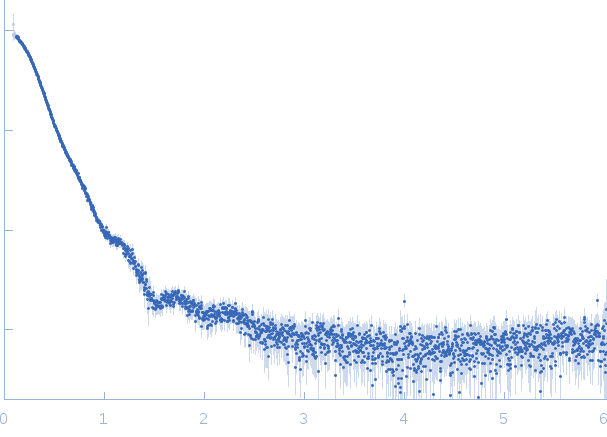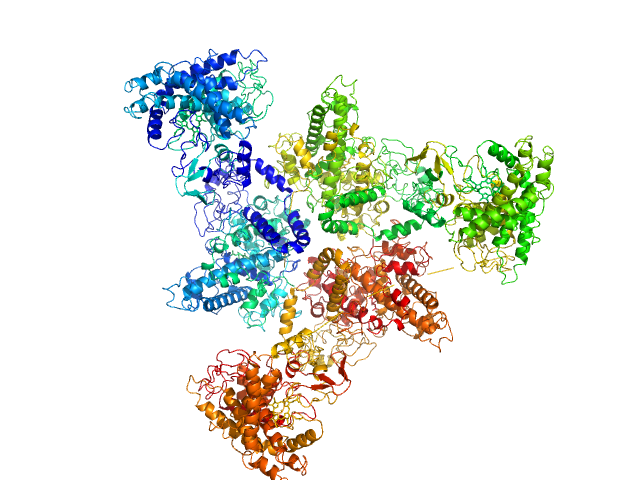| MWexperimental | 330 | kDa |
| MWexpected | 362 | kDa |
| VPorod | 540 | nm3 |
|
log I(s)
2.68×101
2.68×100
2.68×10-1
2.68×10-2
|
 s, nm-1
s, nm-1
|
|
|
|

|
|
Synchrotron SAXS
data from solutions of
PpoA wild type enzyme
in
20 Mm HEPES, pH 7.5
were collected
on the
EMBL X33 beam line
at the DORIS III, DESY storage ring
(Hamburg, Germany)
using a Pilatus 1M-W detector
at a sample-detector distance of 2.7 m and
at a wavelength of λ = 0.15 nm
(I(s) vs s, where s = 4πsinθ/λ, and 2θ is the scattering angle).
Solute concentrations ranging between 0.4 and 26 mg/ml were measured
at 10°C.
Eight successive
120 second frames were collected.
The data were normalized to the intensity of the transmitted beam and radially averaged; the scattering of the solvent-blank was subtracted.
Tags:
X33
|
|
|||||||||||||||||||||||||||